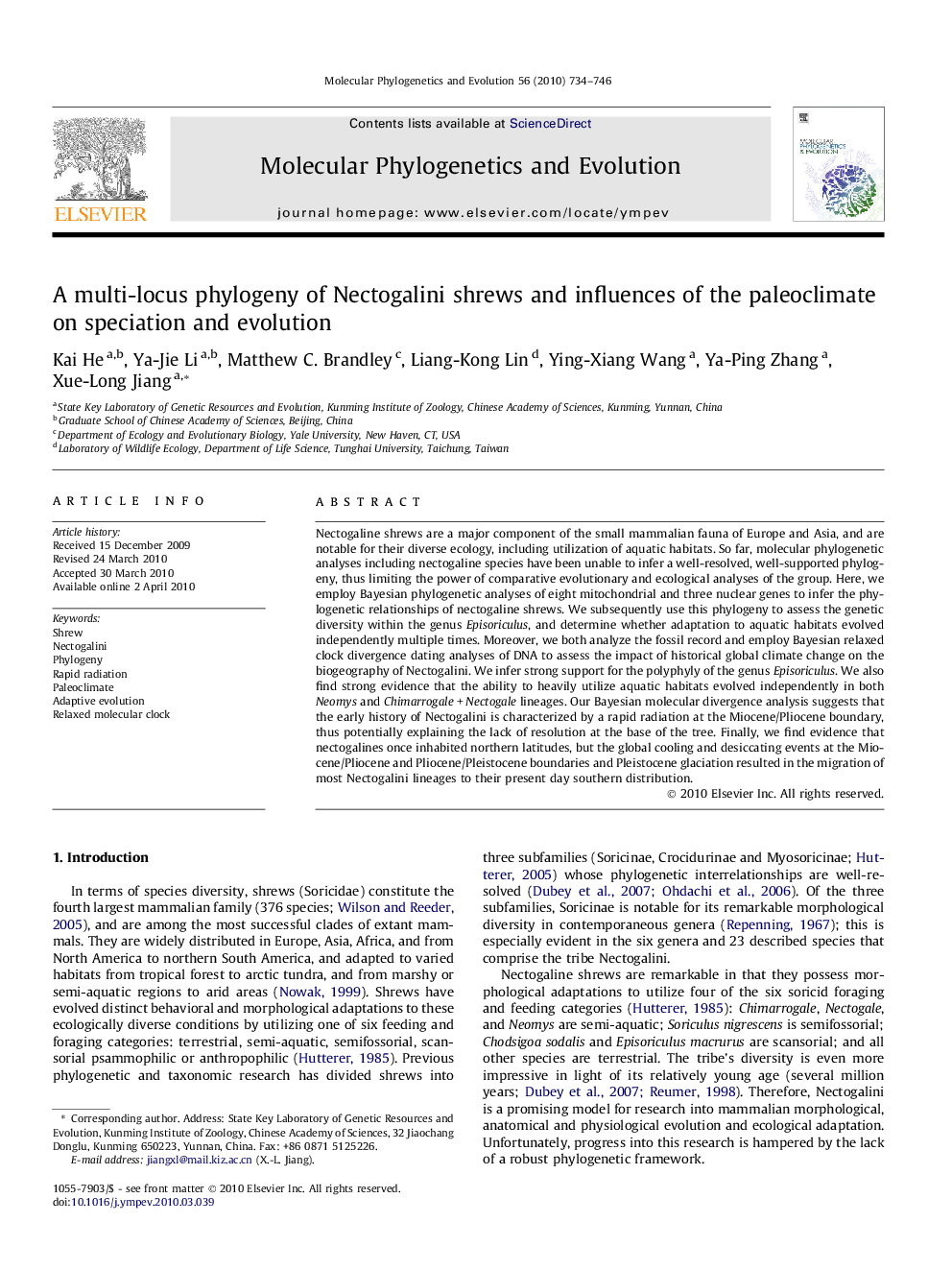| کد مقاله | کد نشریه | سال انتشار | مقاله انگلیسی | نسخه تمام متن |
|---|---|---|---|---|
| 2834522 | 1164315 | 2010 | 13 صفحه PDF | دانلود رایگان |

Nectogaline shrews are a major component of the small mammalian fauna of Europe and Asia, and are notable for their diverse ecology, including utilization of aquatic habitats. So far, molecular phylogenetic analyses including nectogaline species have been unable to infer a well-resolved, well-supported phylogeny, thus limiting the power of comparative evolutionary and ecological analyses of the group. Here, we employ Bayesian phylogenetic analyses of eight mitochondrial and three nuclear genes to infer the phylogenetic relationships of nectogaline shrews. We subsequently use this phylogeny to assess the genetic diversity within the genus Episoriculus, and determine whether adaptation to aquatic habitats evolved independently multiple times. Moreover, we both analyze the fossil record and employ Bayesian relaxed clock divergence dating analyses of DNA to assess the impact of historical global climate change on the biogeography of Nectogalini. We infer strong support for the polyphyly of the genus Episoriculus. We also find strong evidence that the ability to heavily utilize aquatic habitats evolved independently in both Neomys and Chimarrogale + Nectogale lineages. Our Bayesian molecular divergence analysis suggests that the early history of Nectogalini is characterized by a rapid radiation at the Miocene/Pliocene boundary, thus potentially explaining the lack of resolution at the base of the tree. Finally, we find evidence that nectogalines once inhabited northern latitudes, but the global cooling and desiccating events at the Miocene/Pliocene and Pliocene/Pleistocene boundaries and Pleistocene glaciation resulted in the migration of most Nectogalini lineages to their present day southern distribution.
Journal: Molecular Phylogenetics and Evolution - Volume 56, Issue 2, August 2010, Pages 734–746